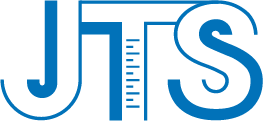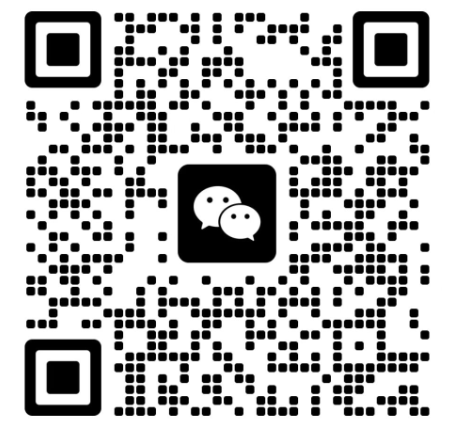HOUSEHOLD PRODUCTSProduct
Your Location:Home > HOUSEHOLD PRODUCTSEU General Product Safety Regulation (GPSR) is a significant technical trade measure designed to ensure the overall safety of consumer products on the EU market. It officially entered into force on December 13, 2024, replacing the previous General Product Safety Directive (GPSD).
1. Main Content of GPSR
The core of the GPSR can be understood as establishing a comprehensive set of safety rules for consumer products sold on the EU market, primarily including the following aspects:
1)General Safety Requirement: Products must not pose any risks under normal or reasonably foreseeable conditions of use, or present only the minimum risks compatible with the product's use.
2)Economic Operator Obligations: Clarifies and details the obligations of various actors in the supply chain (detailed later).
3)Technical Documentation: Manufacturers must prepare detailed technical documentation demonstrating the product's safety.
4)Product Traceability and Marking: Requires products to be traceable and specifies the content of labels and markings (detailed later).
5)Conformity Assessment & Declaration of Conformity: For products not covered by other specific EU legislation (e.g., CE-marking directives), a conformity assessment according to the GPSR may be required, along with a Declaration of Conformity (DoC).
6)Market Surveillance & Safety Gate: Strengthens the powers of market surveillance authorities and utilizes the "Safety Gate" system for rapid information exchange and intervention.
7)Online Sales Obligations: Specifically mandates information that must be clearly provided for distance sales (including online sales).
2. Scope of Application
The GPSR has a very broad scope, but there are some exceptions.
1)Applicable ProductsThe vast majority of non-food consumer products made available on the EU market fall under the GPSR, mainly including:
•New, used, repaired, or refurbished products.
•Products sold both online and offline.
•Physical products and digital products (e.g., software).
•Products supplied free of charge.
2)Exempted ProductsCertain products are exempt because they are governed by other specific EU legislation, mainly including:
•Medicinal products for human or veterinary use.
•Food and animal feed.
•Living plants and animals (and products for their propagation).
•Plant protection products (e.g., pesticides).
•Means of transport operated by service providers (not by consumers themselves).
•Aircraft.
•Second-hand goods explicitly sold for repair or refurbishment, and antiques.
3. Obligations of Economic Operators
The GPSR clearly defines the legal responsibilities for various "Economic Operators" in the supply chain.
| Economic Operator | Key Obligation Requirements |
| Manufacturer (Regardless of location inside or outside the EU) | Ensure products are designed and manufactured according to general safety requirements; conduct internal risk analysis and create technical documentation containing product description and key safety characteristics; ensure products bear an identifier like type, batch, or serial number; perform internal testing and quality checks before market release; establish procedures for incident reporting and effective recalls. |
| Importer | Ensure the manufacturer has fulfilled its obligations; ensure products are marked with the name, registered trade name/trademark, and contact address of both the manufacturer and the importer (themselves). |
| Distributor | Exercise due diligence when making products available on the market; verify that products bear the required labels and information (e.g., responsible person information). |
| EU Responsible Person | This is a core requirement of the GPSR. If the manufacturer is not established in the EU, they must designate a legal or natural person within the EU as the "Responsible Person". Their tasks include: keeping the technical documentation and Declaration of Conformity (DoC) available for market surveillance authorities; cooperating with authorities and taking corrective actions if necessary. The Responsible Person's information must be clearly indicated on the product, its packaging, or accompanying documents. |
Note: Previously, only CE-marked products required an EU Responsible Person. With the GPSR in effect, almost all applicable consumer products must now have a designated EU Responsible Person.
4. Labeling, Marking, and Documentation Requirements
The GPSR specifies how product information must be presented to ensure accessibility and transparency.
1)Physical Product Label ContentThe following information must be clearly marked on the product or its packaging (in the language of the member state where it is sold):
•Manufacturer Information: Name, registered trade name or trademark, and contact address.
•EU Responsible Person Information: Name and contact details (must include an email address or URL; telephone is optional).
•Product Identifier: Such as model, batch number, serial number, or other unique element for traceability.
•Safety Information & Warnings: Applicable safety warnings and alert symbols.
•Country of Origin: Indicate the country where the product was manufactured (e.g., "Made in China").
•Compliance Marks: Such as CE marking, UKCA marking, etc. (if applicable).
•Recycling Symbols: Such as WEEE symbol, battery recycling symbol, etc. (if applicable).
2)Information Required for Online SalesOperators engaged in distance sales (e.g., e-commerce) must prominently display the following information on their website:
•The manufacturer's name, registered trade name or trademark, and contact address.
•If the manufacturer is not in the EU, the name and contact details of the EU Responsible Person.
•Product identifier (e.g., photo, type, batch, description, serial number).
•Any relevant warnings or safety information.
3)Accompanying Documents
•The product must be accompanied by instructions for use and safety information, in the official language of the member state where it is sold.
•Technical Documentation: The manufacturer must draw up technical documentation containing the product description, safety features, risk assessment carried out, complied safety standards, etc. This must be kept for at least 10 years from the date the product is placed on the market.
5. Test Items and Limit Requirements
The GPSR itself does not prescribe unified test items and limit values. Instead, it is based on the core principle of conforming to the definition of a "safe product".
1)Adoption of Safety Standards
•Relevant national standards of the member state where the product is sold.
•Relevant standards drawn up by the European Commission.
•Codes of good practice in the industry.
•The state of the art/current technology.
•Reasonable consumer expectations regarding safety.
•Priority Basis: Manufacturers must first ensure the product complies with all relevant EU harmonized legislation (e.g., Toy Safety Directive, Low Voltage Directive, Machinery Directive, REACH Regulation). These regulations often have specific test standards and limits (e.g., specific heavy metal migration limits in toys, SVHC substance requirements under REACH).
•Reference Standards: If no specific EU legislation exists, reference should be made to (in order of priority):
2)Examples of Common Test ItemsTaking gaming chairs/desks as an example, testing might involve:
•Structural Safety Tests: Backrest/armrest strength (e.g., ≥1500N cyclic test), stability (e.g., tilt angle ≤12°).
•Material Tests: Formaldehyde emission (e.g., ≤0.124 mg/m³), flame retardancy, hexavalent chromium in leather (LFGB test).
•Chemical Substance Detection: Compliance with the REACH SVHC (Substances of Very High Concern) candidate list.
•Ergonomics & Durability Tests: Gas spring durability (requiring certification like EN 12585, 100,000 cycle test).
Core Principle: The "test items and limit values" depend on the nature of the product itself and the specific standards applicable to it. The manufacturer must conduct a risk assessment to determine the necessary tests and ensure the product meets all applicable safety requirements.
6. Important Considerations
1)Effective Date & Transition: The GPSR is effective from December 13, 2024. Products placed on the market after this date must be fully compliant.
2)Platform Compliance Obligations: Online platforms like Amazon, AliExpress will require sellers to submit and verify EU Responsible Person information, manufacturer details, warning labels, etc., in their seller portals. Non-compliant listings may face removal or restrictions.
3)Document Retention Period: Technical documentation and the Declaration of Conformity must be kept for at least 10 years from the date the product is placed on the market.
4)Incident Reporting: Economic operators are obligated to report immediately (within 24 hours) to the market surveillance authorities via the "Safety Gate" system upon learning of a serious incident caused by the product (leading or potentially leading to death/serious injury).
5)Universality of Platform Requirements: While different e-commerce platforms (Amazon, AliExpress, Temu) may have slightly varying fields in their backend forms, the physical label itself can be universal if it includes the most comprehensive set of information required by any platform. It is advisable to design labels adopting the most comprehensive requirements.
6)Language Requirements: All information provided to consumers (labels, instructions) must be in the official language(s) of the member state where the product is sold.
J-Testing is a CNAS, CMA, and CPSIA accredited laboratory, committed to providing global clients with professional third-party testing, consulting services, and cross-border certification assistance.






 Our Service
Our Service
